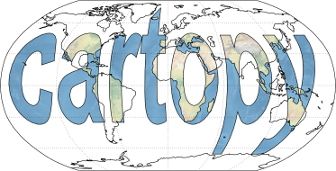import cartopy.crs as ccrs
import cartopy.feature
import matplotlib.pyplot as plt
from matplotlib.patches import PathPatch
import matplotlib.path
import matplotlib.ticker
from matplotlib.transforms import BboxTransform, Bbox
import numpy as np
# When drawing the flag, we can either use white filled land, or be a little
# more fancy and use the Natural Earth shaded relief imagery.
filled_land = True
def olive_path():
"""
Returns a matplotlib path representing a single olive branch from the
UN Flag. The path coordinates were extracted from the SVG at
https://commons.wikimedia.org/wiki/File:Flag_of_the_United_Nations.svg.
"""
olives_verts = np.array(
[[0, 2, 6, 9, 30, 55, 79, 94, 104, 117, 134, 157, 177,
188, 199, 207, 191, 167, 149, 129, 109, 87, 53, 22, 0, 663,
245, 223, 187, 158, 154, 150, 146, 149, 154, 158, 181, 184, 197,
181, 167, 153, 142, 129, 116, 119, 123, 127, 151, 178, 203, 220,
237, 245, 663, 280, 267, 232, 209, 205, 201, 196, 196, 201, 207,
211, 224, 219, 230, 220, 212, 207, 198, 195, 176, 197, 220, 239,
259, 277, 280, 663, 295, 293, 264, 250, 247, 244, 240, 240, 243,
244, 249, 251, 250, 248, 242, 245, 233, 236, 230, 228, 224, 222,
234, 249, 262, 275, 285, 291, 295, 296, 295, 663, 294, 293, 292,
289, 294, 277, 271, 269, 268, 265, 264, 264, 264, 272, 260, 248,
245, 243, 242, 240, 243, 245, 247, 252, 256, 259, 258, 257, 258,
267, 285, 290, 294, 297, 294, 663, 285, 285, 277, 266, 265, 265,
265, 277, 266, 268, 269, 269, 269, 268, 268, 267, 267, 264, 248,
235, 232, 229, 228, 229, 232, 236, 246, 266, 269, 271, 285, 285,
663, 252, 245, 238, 230, 246, 245, 250, 252, 255, 256, 256, 253,
249, 242, 231, 214, 208, 208, 227, 244, 252, 258, 262, 262, 261,
262, 264, 265, 252, 663, 185, 197, 206, 215, 223, 233, 242, 237,
237, 230, 220, 202, 185, 663],
[8, 5, 3, 0, 22, 46, 46, 46, 35, 27, 16, 10, 18,
22, 28, 38, 27, 26, 33, 41, 52, 52, 52, 30, 8, 595,
77, 52, 61, 54, 53, 52, 53, 55, 55, 57, 65, 90, 106,
96, 81, 68, 58, 54, 51, 50, 51, 50, 44, 34, 43, 48,
61, 77, 595, 135, 104, 102, 83, 79, 76, 74, 74, 79, 84,
90, 109, 135, 156, 145, 133, 121, 100, 77, 62, 69, 67, 80,
92, 113, 135, 595, 198, 171, 156, 134, 129, 124, 120, 123, 126,
129, 138, 149, 161, 175, 188, 202, 177, 144, 116, 110, 105, 99,
108, 116, 126, 136, 147, 162, 173, 186, 198, 595, 249, 255, 261,
267, 241, 222, 200, 192, 183, 175, 175, 175, 175, 199, 221, 240,
245, 250, 256, 245, 233, 222, 207, 194, 180, 172, 162, 153, 154,
171, 184, 202, 216, 233, 249, 595, 276, 296, 312, 327, 327, 327,
327, 308, 284, 262, 240, 240, 239, 239, 242, 244, 247, 265, 277,
290, 293, 296, 300, 291, 282, 274, 253, 236, 213, 235, 252, 276,
595, 342, 349, 355, 357, 346, 326, 309, 303, 297, 291, 290, 297,
304, 310, 321, 327, 343, 321, 305, 292, 286, 278, 270, 276, 281,
287, 306, 328, 342, 595, 379, 369, 355, 343, 333, 326, 318, 328,
340, 349, 366, 373, 379, 595]]).T
olives_codes = np.array([1, 4, 4, 4, 4, 4, 4, 4, 4, 4, 4, 4, 4, 4, 4, 4,
4, 4, 4, 4, 4, 4, 4, 4, 4, 79, 1, 4, 4, 4, 4, 4,
4, 4, 4, 4, 4, 4, 4, 4, 4, 4, 4, 4, 4, 4, 4, 4,
4, 4, 4, 4, 4, 4, 79, 1, 4, 4, 4, 4, 4, 4, 2, 4,
4, 4, 4, 4, 4, 4, 4, 4, 4, 4, 4, 4, 4, 4, 4, 4,
4, 79, 1, 4, 4, 4, 4, 4, 4, 4, 4, 4, 4, 4, 4, 4,
4, 4, 4, 4, 4, 4, 4, 4, 4, 4, 4, 4, 4, 4, 4, 4,
4, 79, 1, 4, 4, 4, 4, 4, 4, 4, 4, 4, 4, 4, 4, 4,
4, 4, 4, 4, 4, 4, 4, 4, 4, 4, 4, 4, 4, 4, 2, 4,
4, 4, 4, 4, 4, 79, 1, 4, 4, 4, 4, 4, 4, 4, 4, 4,
2, 4, 4, 4, 4, 4, 4, 4, 4, 4, 4, 4, 4, 4, 4, 4,
4, 4, 4, 4, 4, 4, 79, 1, 4, 4, 4, 4, 4, 4, 4, 4,
4, 2, 4, 4, 4, 4, 4, 4, 4, 4, 4, 4, 4, 4, 4, 4,
4, 4, 4, 4, 79, 1, 4, 4, 4, 4, 4, 4, 4, 4, 4, 4,
4, 4, 79], dtype=np.uint8)
return matplotlib.path.Path(olives_verts, olives_codes)
def main():
blue = '#4b92db'
# We're drawing a flag with a 3:5 aspect ratio.
fig = plt.figure(figsize=[10, 6], facecolor=blue)
# Put a blue background on the figure.
blue_background = PathPatch(matplotlib.path.Path.unit_rectangle(),
transform=fig.transFigure, color=blue,
zorder=-1)
fig.patches.append(blue_background)
# Set up the Azimuthal Equidistant and Plate Carree projections
# for later use.
az_eq = ccrs.AzimuthalEquidistant(central_latitude=90)
pc = ccrs.PlateCarree()
# Pick a suitable location for the map (which is in an Azimuthal
# Equidistant projection).
ax = plt.axes([0.25, 0.24, 0.5, 0.54], projection=az_eq)
# The background patch and outline patch are not needed in this example.
ax.background_patch.set_facecolor('none')
ax.outline_patch.set_edgecolor('none')
# We want the map to go down to -60 degrees latitude.
ax.set_extent([-180, 180, -60, 90], ccrs.PlateCarree())
# Importantly, we want the axes to be circular at the -60 latitude
# rather than cartopy's default behaviour of zooming in and becoming
# square.
_, patch_radius = az_eq.transform_point(0, -60, pc)
circular_path = matplotlib.path.Path.circle(0, patch_radius)
ax.set_boundary(circular_path)
if filled_land:
ax.add_feature(
cartopy.feature.LAND, facecolor='white', edgecolor='none')
else:
ax.stock_img()
gl = ax.gridlines(crs=pc, linewidth=3, color='white', linestyle='-')
# Meridians every 45 degrees, and 5 parallels.
gl.xlocator = matplotlib.ticker.FixedLocator(np.arange(0, 361, 45))
parallels = np.linspace(-60, 70, 5, endpoint=True)
gl.ylocator = matplotlib.ticker.FixedLocator(parallels)
# Now add the olive branches around the axes. We do this in normalised
# figure coordinates
olive_leaf = olive_path()
olives_bbox = Bbox.null()
olives_bbox.update_from_path(olive_leaf)
# The first olive branch goes from left to right.
olive1_axes_bbox = Bbox([[0.45, 0.15], [0.725, 0.75]])
olive1_trans = BboxTransform(olives_bbox, olive1_axes_bbox)
# THe second olive branch goes from right to left (mirroring the first).
olive2_axes_bbox = Bbox([[0.55, 0.15], [0.275, 0.75]])
olive2_trans = BboxTransform(olives_bbox, olive2_axes_bbox)
olive1 = PathPatch(olive_leaf, facecolor='white', edgecolor='none',
transform=olive1_trans + fig.transFigure)
olive2 = PathPatch(olive_leaf, facecolor='white', edgecolor='none',
transform=olive2_trans + fig.transFigure)
fig.patches.append(olive1)
fig.patches.append(olive2)
plt.show()
if __name__ == '__main__':
main()

